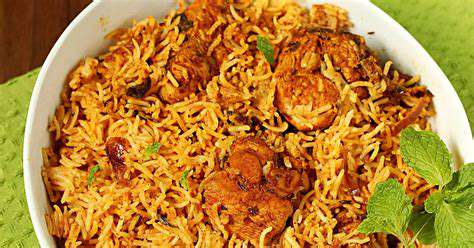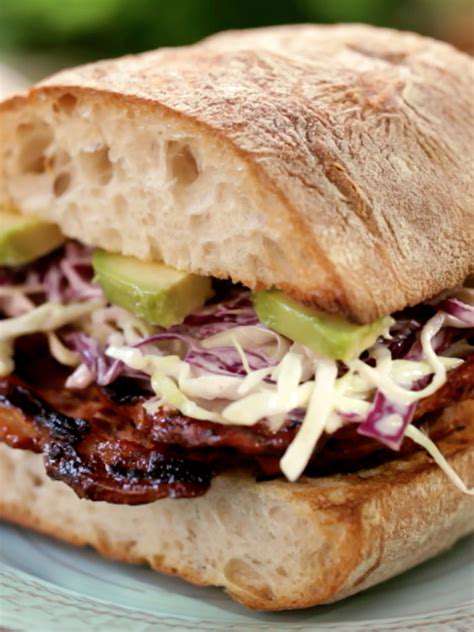Exploring Indian Street Food: Samosas and Chaat
A Taste of Tradition
There's something magical about biting into a perfectly golden samosa. These triangular pockets of joy, stuffed with aromatic spiced potatoes and peas, aren't just food - they're edible history. Every culture has its comfort foods, but samosas hold a unique place in culinary traditions across South Asia and beyond. Whether you find them sizzling in street vendors' pans or lovingly prepared in home kitchens, their appeal transcends generations.
Making samosas isn't just cooking - it's an art form. The dough requires just the right touch, the filling needs careful seasoning, and the folding technique varies by region. Some families guard their recipes like treasured heirlooms, passing down secrets from grandmother to granddaughter. This dedication shows how what might seem like a simple snack actually carries deep cultural significance.
Crispy Perfection: A Textural Symphony
That first crisp bite into a well-made samosa is what food memories are made of. The exterior should shatter delicately, revealing the steaming interior without crumbling completely. Achieving this balance takes practice - the oil must be hot enough to create bubbles in the dough but not so hot that the outside burns before the inside cooks.
Interestingly, the cooking method varies by region. Some swear by deep frying, others prefer shallow frying, and health-conscious versions bake beautifully. The common thread? That irresistible contrast between the crisp shell and flavorful filling that keeps people coming back for more.
A World of Flavorful Fillings
While potato-pea is the classic, innovative fillings abound. In Hyderabad, you might find keema (spiced minced meat) versions. Gujarat offers sweet and spicy variations. Modern twists include paneer, corn, even chocolate for dessert samosas. This adaptability explains why samosas have traveled so well globally - there's a version for every palate.
Regional differences tell stories of local ingredients and tastes. Coastal areas might add coconut, while northern versions often feature richer spices. Each variation offers a delicious glimpse into local food culture.
A Culinary Journey Through India
Samosas serve as edible ambassadors of Indian cuisine worldwide. Their portability made them perfect for travelers and traders throughout history. Today, they bridge generations - grandparents reminisce about childhood samosas while kids enjoy modern interpretations. The aroma alone can transport people to bustling bazaars or cozy family kitchens.
A Versatile Dish
From humble street food to gourmet appetizers, samosas adapt beautifully. Pair them with tangy tamarind chutney for classic street food vibes, or elevate them with sophisticated dipping sauces for parties. Their shape makes them perfect finger food, while their satisfying nature works as a light meal. Breakfast, snack, or part of a feast - samosas always fit in.
What began as a traveling merchants' snack centuries ago has become a global phenomenon. From Mumbai to Manhattan, the samosa's journey continues, winning hearts one crispy bite at a time.
Beyond the Filling: A Look at the Diverse World of Chaat
Beyond the Crisp: The Art of Spicing
Chaat isn't just food - it's a flavor explosion that dances on your tongue. The magic lies in the spice blends, often unique to each vendor. Some use family recipes dating back generations, carefully balancing heat, tang, and sweetness. The best chaatwalas (chaat makers) are like flavor chemists, knowing exactly how much cumin or chaat masala will create that perfect zing.
Regional variations shine through in spice choices. Delhi's dahi puri leans tangy with tamarind, while Mumbai's sev puri might pack more heat. The spices don't just flavor - they create an experience, from the first aromatic whiff to the lingering aftertaste.
The Crunchy Crumble: A Textural Symphony
Great chaat plays with textures like a symphony conductor. Crisp puris, tender potatoes, creamy yogurt, and crunchy sev create a delightful mouthfeel. The artistry comes in layering - too much of one element overwhelms, while skillful balancing creates harmony. Vendors often adjust textures based on weather too - monsoons might call for extra crispness to combat humidity.
Beyond the Street: Chaat's Growing Popularity
What began as affordable street fare now stars in fine dining. Chefs reinterpret classic chaat with premium ingredients, while food trucks globalize the concept. This elevation shows how deeply chaat resonates - it's not just tasty, but culturally significant. From college students to CEOs, everyone has their favorite chaat memories.
The Role of Yoghurt and Sauces: A Tangy Twirl
The cool swirl of yogurt or tamarind chutney does more than add moisture - it creates balance. These elements are the yin to spices' yang, preventing flavor fatigue while adding complexity. In sweltering summers, their cooling effect makes chaat particularly refreshing. The contrast between hot spices and cool sauces is part of chaat's genius.
The Social Aspect: A Shared Culinary Journey
Chaat is best enjoyed communally. Street stalls become impromptu gathering spots where strangers bond over shared plates. There's democracy in chaat culture - everyone stands equally while waiting for their turn. This social dimension transforms simple snacks into meaningful cultural experiences.

Street Food Culture and Beyond: More Than Just a Meal

Street Food Culture: A Global Phenomenon
Street food operates as the world's most democratic restaurant, serving everyone from laborers to executives. These mobile kitchens preserve culinary traditions that might otherwise fade, acting as edible museums of regional flavors. The vendor who's been frying samosas at the same corner for 30 years isn't just selling snacks - they're safeguarding heritage.
Economically, street food supports entire ecosystems. Spice grinders, vegetable suppliers, and utensil makers all depend on this vibrant trade. In many cities, street food hubs become tourist attractions themselves, proving that authentic flavors often come from humble setups.
The Evolution of Street Food
Ancient Rome had its thermopolia (fast food joints), showing street food's timeless appeal. Today's food trucks with GPS and Instagram accounts are just the latest iteration. What's fascinating is how street food both preserves tradition and innovates - a vendor might use centuries-old recipes while accepting digital payments.
Cultural Significance of Street Food
Street food encapsulates local identity like nothing else. The spices reflect regional agriculture, the cooking methods show historical influences, and the serving styles reveal social norms. To understand a culture, eat where the locals eat - often at a street stall.
Health and Safety Concerns
While concerns exist, many vendors take pride in their hygiene standards. The best approach? Observe where locals queue - community approval often indicates quality and safety. Regulations help, but the most effective quality control remains customer loyalty built over years.
Street Food and Tourism
Food tourism now drives many travel decisions, with street food tours among the most popular activities. These experiences offer more than meals - they're immersive cultural exchanges. A cooking demo at a street stall often teaches more about local life than any museum.
Sustainability and Street Food
Traditional street food was inherently sustainable - banana leaf plates, clay cups, and minimal waste. Modern vendors increasingly return to these roots, recognizing that eco-consciousness attracts customers. The street food sector may lead the culinary world in sustainable practices, out of both necessity and tradition.
The Perfect Pairing: Accompaniments and Beverages
Exploring the Culinary Harmony of Street Food: Accompaniments
Indian street food's accompaniments aren't afterthoughts - they're essential supporting actors that complete the flavor picture. The right chutney can elevate a simple snack to greatness, while a poorly matched sauce can overwhelm. This delicate balance is why vendors often prepare accompaniments fresh throughout the day.
The Role of Chutneys in Enhancing Flavors
Every region boasts signature chutneys reflecting local produce. Coastal areas might feature coconut chutneys, while inland regions favor mint or coriander. The beauty lies in customization - vendors often adjust chutneys based on customer preferences, creating personalized flavor profiles.
The Importance of Beverages
In India's heat, street food beverages serve functional purposes beyond taste. Sweet lassi replenishes energy, while salty lemonade replaces electrolytes. Masala chai's warmth aids digestion. These pairings developed over centuries to create nutritionally balanced quick meals.
Understanding the Cultural Significance of Accompaniments
Accompaniments often have religious or seasonal significance. Certain chutneys feature in festivals, while specific beverages mark weather changes. These connections make street food an edible calendar of cultural events.
The Influence of Regional Variations
Travel across India, and you'll notice accompaniments change more dramatically than the main dishes. This reflects how local ingredients and traditions shape flavor preferences. A samosa in Kolkata comes with different chutneys than its Mumbai counterpart, telling a story of regional tastes.
Balancing Flavors and Textures
The ideal street food experience engages all senses and taste receptors. Sweet, salty, sour, bitter, and umami should all make appearances, as should varied textures. This holistic approach to flavor makes Indian street food particularly satisfying and complex.
Beyond the Basic: Exploring Exotic Options
Adventurous eaters should seek out regional specialties like kokum sherbet or kanji (fermented carrot drink). These unusual pairings showcase India's incredible biodiversity and culinary creativity. Sometimes the most memorable part of a street food experience isn't the main dish, but its unexpected accompaniment.
- Quick Weeknight Meals: From Pantry to Plate
- How to Store Avocados: Ripening and Storing
- Keto Desserts: Guilt Free Sweet Treats
- Cooking with Spices: A Beginner's Flavor Guide
- Healthy Breakfast Smoothies: Power Packed Blends
- How to Store Potatoes Long Term: Cool and Dark
- Dairy Free Desserts: Creamy Vegan Ice Cream Recipe
- Understanding Micronutrients: Vitamins and Minerals
- Homemade Granola: Healthy and Customizable
- Vegetarian Dinner Party Ideas: Impress Your Guests
- Low Sodium Dinner Recipes: Heart Healthy and Delicious
- Kitchen Paint Colors: Creating Ambiance